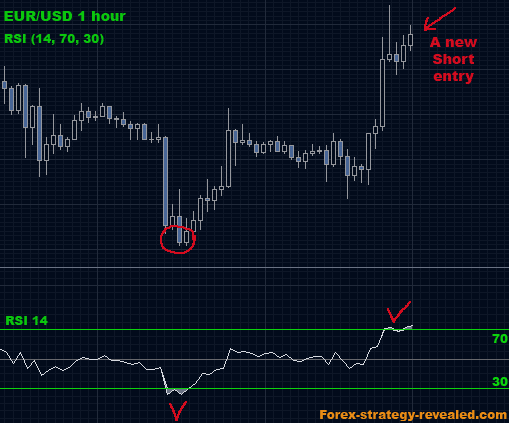
The bear market is in the S&P 500 Stock Index. A bear market can be defined as a 20 percent decline in the stock index's high. Wall Street uses this term to indicate a market decline and allows investors to compare past downdrafts to the current market. We'll be discussing how to invest during a bear market. These are some tips for those who have yet to make the switch to stock markets.
Dividend stocks
Investors who own dividend stocks are safe havens in a down market. Despite the economic downturn, dividend-paying businesses continue to thrive. Dollar General stock may be worth considering in a bear-market. The fast-food star could emerge as a stealth winner among safe dividend stock. Here are some reasons why. We'll look at each in turn.

Utilities
The best way to invest in retirement is utilities. Although we live in an age of low unemployment and shrinking wages, utilities still offer great income opportunities. These companies provide us with electricity, water, gas and other essential services, making them ideal investments for retirement. Because of their steady cash flows, low risk, and low volatility, they are perfect retirement investments. Many investors were protected by utility stocks during 2008's financial crisis. Utility stocks often go well with other defensive and conservative stocks due to their low risk and steady cash flow.
Bonds
Many investors believe the recent fears about a bond bear markets are exaggerated. However, the fact is that there will be no sustained crash in the market anytime soon. The recent rises in interest rates are a contributing factor in the current decline in bond price. However, investors should remember that past rate hikes are no guarantee for future increases. As with stocks' past performance, it is not possible to predict how bonds will perform in the future.
Investing when there is a bearish mood
Bear markets can be challenging, but they can also present great opportunities for long-term investment. Bear markets are characterized by excessive market overreactions, often fueled by greed or fear. These feelings can lead to irrational decisions. Furthermore, it can be difficult to find good opportunities, because confidence deserts the market. Luckily, there are several strategies that can help you invest effectively during this time.

Buying during a bull markets
While the stock market is generally characterized by a bull market, this term is applicable to any widely traded financial security. In other words, a bull market is when prices and market value are expected to increase. Bull markets are associated with a growing economy and high levels of employment. The stock market does not always move in the same way. You may need to delay investing, especially if it's an investor.
FAQ
How Share Prices Are Set?
Investors set the share price because they want to earn a return on their investment. They want to make a profit from the company. So they buy shares at a certain price. If the share price increases, the investor makes more money. Investors lose money if the share price drops.
The main aim of an investor is to make as much money as possible. They invest in companies to achieve this goal. It helps them to earn lots of money.
How does Inflation affect the Stock Market?
Inflation is a factor that affects the stock market. Investors need to pay less annually for goods and services. As prices rise, stocks fall. That's why you should always buy shares when they're cheap.
Are stocks a marketable security?
Stock is an investment vehicle that allows investors to purchase shares of company stock to make money. You do this through a brokerage company that purchases stocks and bonds.
Direct investments in stocks and mutual funds are also possible. There are over 50,000 mutual funds options.
There is one major difference between the two: how you make money. Direct investments are income earned from dividends paid to the company. Stock trading involves actually trading stocks and bonds in order for profits.
Both of these cases are a purchase of ownership in a business. But, you can become a shareholder by purchasing a portion of a company. This allows you to receive dividends according to how much the company makes.
Stock trading is a way to make money. You can either short-sell (borrow) stock shares and hope the price drops below what you paid, or you could hold the shares and hope the value rises.
There are three types to stock trades: calls, puts, and exchange traded funds. Call and Put options give you the ability to buy or trade a particular stock at a given price and within a defined time. ETFs are similar to mutual funds, except that they track a group of stocks and not individual securities.
Stock trading is very popular because it allows investors to participate in the growth of a company without having to manage day-to-day operations.
Stock trading is not easy. It requires careful planning and research. But it can yield great returns. You will need to know the basics of accounting, finance, and economics if you want to follow this career path.
What's the role of the Securities and Exchange Commission (SEC)?
SEC regulates brokerage-dealers, securities exchanges, investment firms, and any other entities involved with the distribution of securities. It enforces federal securities laws.
Statistics
- "If all of your money's in one stock, you could potentially lose 50% of it overnight," Moore says. (nerdwallet.com)
- Individuals with very limited financial experience are either terrified by horror stories of average investors losing 50% of their portfolio value or are beguiled by "hot tips" that bear the promise of huge rewards but seldom pay off. (investopedia.com)
- Even if you find talent for trading stocks, allocating more than 10% of your portfolio to an individual stock can expose your savings to too much volatility. (nerdwallet.com)
- The S&P 500 has grown about 10.5% per year since its establishment in the 1920s. (investopedia.com)
External Links
How To
How to Invest in Stock Market Online
Stock investing is one way to make money on the stock market. There are many ways to do this, such as investing through mutual funds, exchange-traded funds (ETFs), hedge funds, etc. The best investment strategy depends on your investment goals, risk tolerance, personal investment style, overall market knowledge, and financial goals.
You must first understand the workings of the stock market to be successful. This includes understanding the different types of investments available, the risks associated with them, and the potential rewards. Once you have a clear understanding of what you want from your investment portfolio you can begin to look at the best type of investment for you.
There are three main types of investments: equity and fixed income. Equity is the ownership of shares in companies. Fixed income refers debt instruments like bonds, treasury bill and other securities. Alternatives include commodities and currencies, real property, private equity and venture capital. Each category comes with its own pros, and you have to choose which one you like best.
Two broad strategies are available once you've decided on the type of investment that you want. One is called "buy and hold." You buy some amount of the security, and you don't sell any of it until you retire or die. Diversification is the second strategy. It involves purchasing securities from multiple classes. You could diversify by buying 10% each of Apple and Microsoft or General Motors. You can get more exposure to different sectors of the economy by buying multiple types of investments. This helps you to avoid losses in one industry because you still have something in another.
Another key factor when choosing an investment is risk management. Risk management can help you control volatility in your portfolio. You could choose a low risk fund if you're willing to take on only 1% of the risk. If you are willing and able to accept a 5%-risk, you can choose a more risky fund.
Your money management skills are the last step to becoming a successful investment investor. Planning for the future is key to managing your money. A plan should address your short-term and medium-term goals. It also needs to include retirement planning. That plan must be followed! Don't get distracted by day-to-day fluctuations in the market. Keep to your plan and you will see your wealth grow.